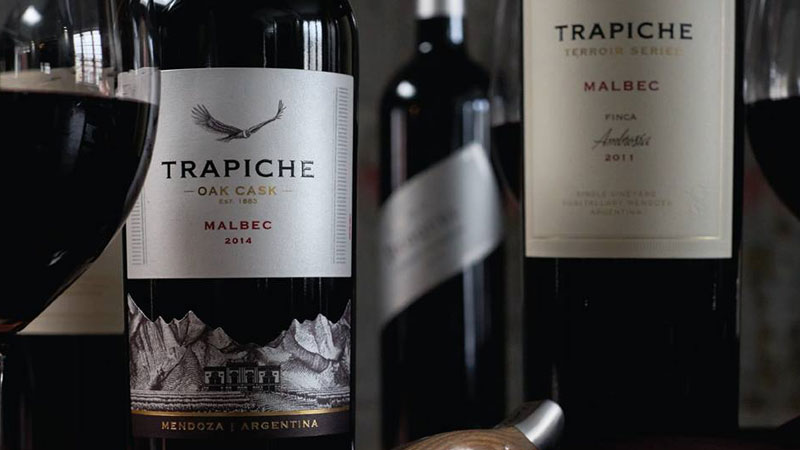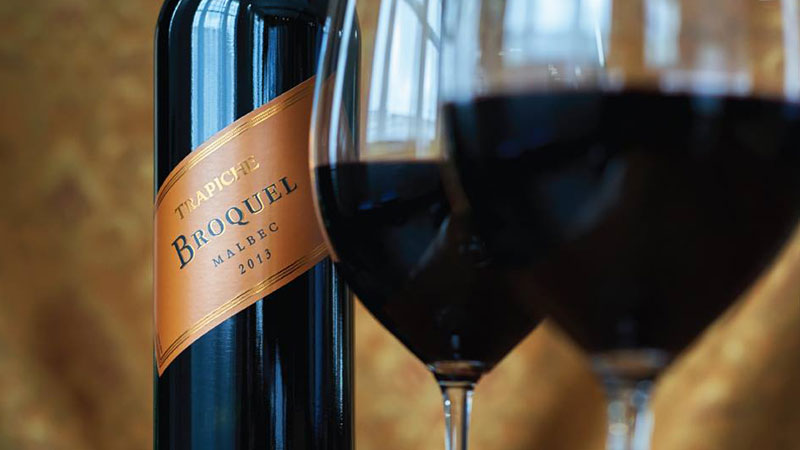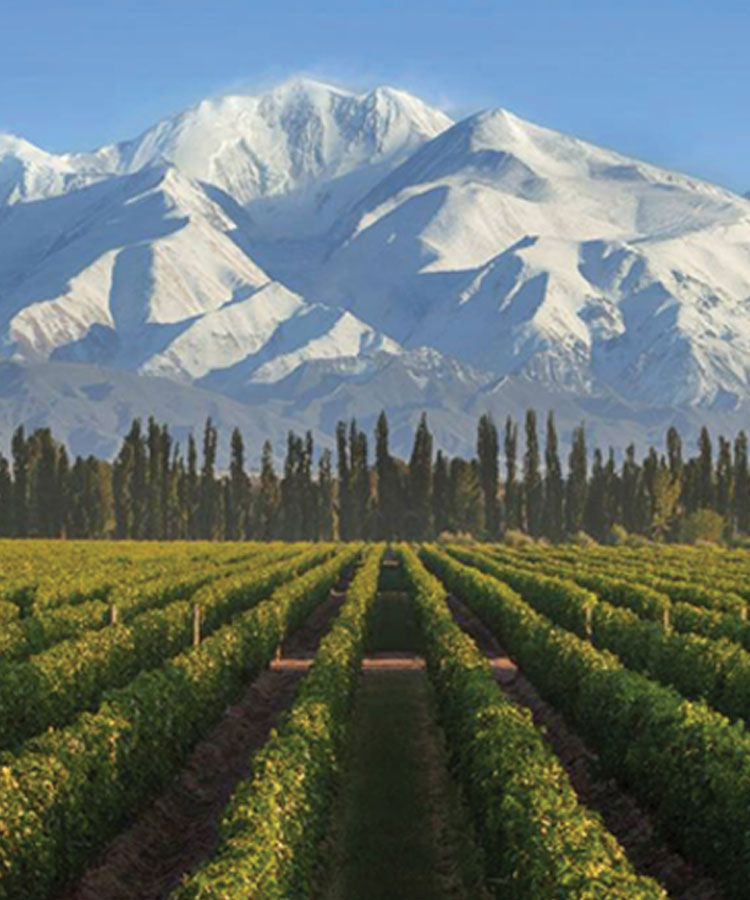
The secret is officially out: The world is obsessed with the wines of Argentina. In recent years, the South American nation has become the fifth-largest producer of wine in the entire world, with much of that wine produced in Mendoza, a region nestled in the eastern foothills of the Andes Mountains. With sandy alluvial soil that rests on clay, the area has four distinct seasons but no extreme temperatures. It’s an ideal place for grapevines to flourish.
But one Mendoza winemaker, Trapiche, stands out from the rest. It’s famous for its Malbecs —wines made with the eponymous French grape, so popular that they’ve become synonymous with Argentinian winemaking — but that’s not all Trapiche can do. A wide range of offerings combined with a unique history make this winery one of the most important in the country. Need proof? Here’s everything you need to know about Trapiche.

It Has One Heck of a Backstory
The winery’s history stretches back to 1883, when Tiburcio Benegas first set up shop in the town of Godoy Cruz. Benegas had a huge impact on the entire region: He lobbied to build a railroad that linked Mendoza with Buenos Aires, which ultimately made exports from the region explode. He also encouraged the production of fine wines, because poorly made vintages wouldn’t survive the journey to the capital. If that wasn’t enough, Benegas also served as the provincial governor of Mendoza. While in this role, he managed to secure a massive loan to found the Bank of Mendoza, which funded the construction of massive dams and ditches in the Mendoza River to support a growing number of vineyard plantations. The efforts were wildly successful, paving the way not only for Trapiche, but helping to lay the foundation for Mendoza to become Argentina’s most important wine region.
It’s the Most Awarded Winery in Argentina
Not to brag or anything, but Trapiche has taken home its fair share of shiny hardware. In 2018, world-famous wine critic James Suckling awarded the Broquel and Oak Cask 2017 Malbecs an impressive score of 92 and 91 points, respectively, while Decanter Tasting gave the 2014 Medalla Malbec a whopping 95 points. Trapiche’s 2014 and 2015 Cabernets, 2016 and 2017 Chardonnays, and 2013 Cabernet Sauvignon aren’t anything to sneeze at, either — they all earned 90-plus points from top critics. Of course, all of these accolades only scratch the surface of Trapiche’s many wine honors. (We’d be here all day if we went through them all.)
Much of Trapiche’s achievement is thanks to its talented director of winemaking Daniel Pi, who shepherded in a new era of winemaking when he joined the ranks in 2002. Pi has his hands full; he oversees the production of more than 200 million liters of wine every single year.
You Can Drink It in More Than 80 Countries
Trapiche gets around! You can find bottles — especially the Malbecs, affectionately dubbed by fans “The World’s Favorite Malbec” — in countries across the globe, whether you’re in China, Germany, or South Africa. Part of its popularity is thanks to Trapiche wines’ reliable consistency over the years, which is due, in part, to the fact that it sources grapes from a stable of more than 200 independent growers. No matter what issues growers face in a given year, Trapiche is still able to select the best grapes of the bunch (pun intended) and produce a fantastic product.
It Fits Any Budget
No matter how you slice it, Trapiche wines offer good bang for your buck. Bottles like the rich and spicy Broquel Malbec are satisfying and nuanced with notes of smoke, red and black fruits, and earthy minerals. The same goes for the Trapiche Cabernet Sauvignon, which is priced at an affordable price point. You’ll be a hero if you bring it to your next dinner party: The richly colored oak-casked Cab Sauv, a particular favorite of late, boasts aromas of plum, berry, and a hint of licorice. Fresh and clean, it packs flavors of blackberry and chocolate.

The Grapes Aren’t Treated With Harsh Chemicals
Sustainability is a huge priority for Trapiche. All chemicals, herbicides, and fungicides are banned from the vineyards; the soil is monitored for healthy bacterial activity; plantings are carefully planned to maximize biodiversity; and the only fertilizers allowed are natural vegetable and animal waste from farms that similarly shun harmful chemicals and farming practices. But sustainability is more than just a trendy talking point. It keeps vineyards healthy so that they can continue to produce high-end grapes year after year.
It’s a goal that Trapiche is constantly chasing after. Director of Winemaking Daniel Pi is always learning new techniques from other winemaking leaders around the world so that he can implement them at home.
The result? Trapiche wines keep getting better.
This article is sponsored by Trapiche Wines.

